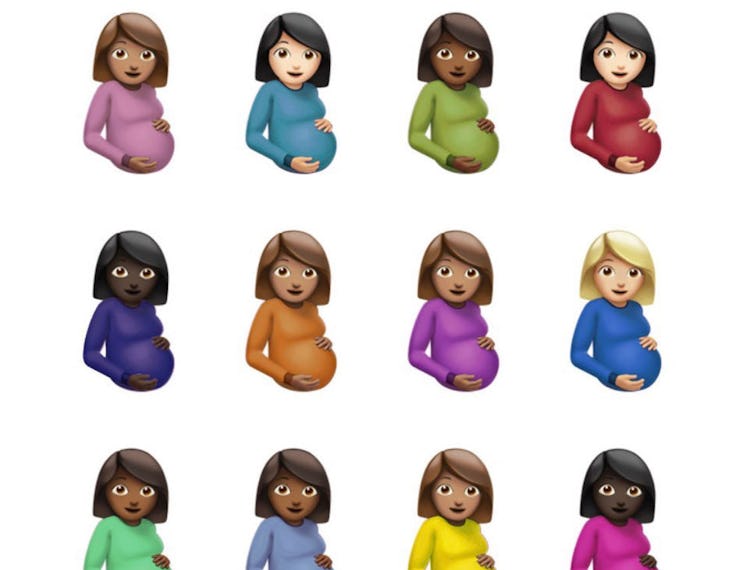What Does Drake’s Damien Hirst-designed Certified Lover Boy Cover Even Mean?

Drake has reached a milestone in his career few have achieved: he’s commissioned a blue-chip artist—in this case, the conceptual and controversial Damien Hirst—to design the cover for his upcoming Certified Lover Boy album. It’s the kind of flex that only the top tier seems to be able to pull off. Lady Gaga famously commissioned Jeff Koons (in a way, Hirst’s American counterpart) to do the cover for Artpop. Backpack rap-era Kanye West got Japanese artist Takashi Murakami to do the artwork for Graduation, while studied polyglot-era Kanye recruited painter George Condo to do the My Beautiful Dark Twisted Fantasy visuals.
The Certified Lover Boy cover may not be apparent to the casual viewer instantly as serious art. After all, it’s just emojis—the pregnant lady emoji reproduced and repeated in various color combinations, to be exact. Why enlist Hirst, reportedly the U.K.’s richest living artist, for that?
Well, emojis aside, the artwork does seem to be in conversation with Hirst’s previous work.
Hirst is best known for pieces that ruminate on death. His two most famous (or infamous, depending on your tastes) pieces are For the Love of God, a platinum cast of a human skull encrusted in diamonds, and The Physical Impossibility of Death in the Mind of Someone Living, a dead tiger shark encased in formaldehyde (in case you’re not picking up on it, Hirst is championed for his bold “ideas” more than his mastery of a traditional artist craft). But it’s not all doom and gloom. Some of his stuff is almost cheery in appearance and has proven quite commercial (by design).
The composition of the Drake recalls Hirst’s spot painting series in which hand-painted circles of bright colors are interspersed on a white background. Here, of course, those spots have been replaced by the cartoonishly round digital bellies of the pregnant emojis.
You also can’t talk about Hirst and pregnancy without recalling his controversial 2005 statue, Virgin Mother. A 35-foot-tall bronze work that reimagines Edgar Degas’s The Little Fourteen-Year-Old Dancer as a biopsied pregnant woman rendered to look almost like a medical textbook diagram. (Another monumental sculpture, Verity, repeats similar themes, except in that piece, the woman is holding a sword).
Of course, there’s no immediate takeaway about what this combination of two of Hirst’s previous themes really mean. Maybe the point was just to create something using solely emojis that still seemed identifiable within Hirst’s established oeuvre—a vaguely interesting and very modern artistic challenge.
Given the album’s title, however, it’s hard to think that the point of it all isn’t simply: “Well, Drake is such a certified lover boy that he’s out here getting all these women pregnant..at least, metaphorically.”
But sometimes with Hirst’s work, the biggest point seems to be that the object even exists at all. Maybe Drake felt he had reached a point in his career where he could get Hirst to design his album cover, and that was reason enough to release the work. It’s quite possible that for both of them, the actual result is secondary.